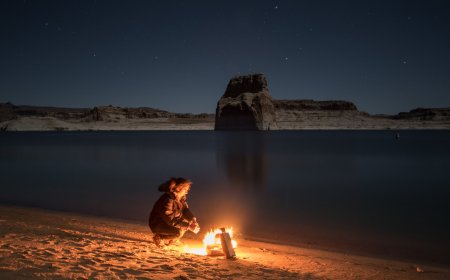Harnessing Renewable Energy for Human Survival in Post-Apocalyptic Scenarios
Discover the science behind human survival and self-sustenance in a post-apocalyptic world. This article unveils the secrets of harnessing renewable energy and the essential skills required for survival in an uncertain future

In a world where everything you've known has collapsed, the concept of human survival takes on new urgency. Post-apocalypse, one thing becomes clear: self-sustenance isn't a luxury—it's a necessity.
Renewable energy plays a key role in human survival in such scenarios. When traditional power sources fail, the sun, wind, and water become our most vital allies. Let's dive into this further.
The Power of the Sun
In the stark reality of a post-apocalyptic world, the sun isn't just a source of light—it's a source of life. Solar power is a beacon of hope for human survival. Solar panels, simple to set up and operate, convert sunlight into electricity. This electricity is indispensable for heating, cooling, lighting, and charging necessary devices.
Using everyday tools and a little DIY spirit, you can set up a basic solar power system:
-
Solar Panels: Buy or salvage solar panels. You'll need a sunny spot where they can catch the sun for the majority of the day.
-
Setup: Mount the panels on a stable surface, such as a rooftop or ground, angled towards the sun. You can use basic tools like a hammer, nails, or screws for this.
-
Charge Controller: Connect the solar panels to a charge controller with basic wiring. This can be done with common tools like wire strippers and screwdrivers.
-
Batteries: The charge controller should then be connected to a battery or battery bank. Ensure all connections are tight and secure.
-
Inverter: Finally, hook up an inverter to convert the stored DC power into AC power for everyday use.
Winds of Change
Wind energy is another resource waiting to be harnessed. Wind turbines, big or small, can produce electricity even in the most desolate landscapes. This steady source of power is a game-changer for human survival, giving us a way to communicate, cook, and stay warm.
Harnessing Wind Energy with Basic Tools
-
Wind Turbine: Find a location with consistent wind. You can build a basic turbine using lightweight, durable materials like PVC pipes and a generator motor.
-
Tower: Mount the turbine high on a tower for optimal wind capture. This can be a DIY project using metal poles, nuts, and bolts.
-
Charge Controller and Batteries: Connect the turbine to a charge controller and then to your batteries, just like with the solar setup.
Water: The Lifeline
If near a water source, hydroelectric power is an option. Small-scale hydroelectric generators are relatively easy to set up and provide a constant power supply. If a river runs, electricity flows—an essential comfort in times of hardship.
Creating Hydroelectric Power with Everyday Items
-
Water Turbine: For this, you need a consistent water source. You can build a simple turbine using plastic spoons as the paddles and a bicycle wheel as the base.
-
Generator: Connect the water turbine to a small generator. The spinning turbine will generate power.
-
Power Storage: Link the generator to a charge controller and battery system to store power for future use.
With a bit of ingenuity and basic tools, we can harness the natural energy sources around us, providing a lifeline for survival in a post-apocalyptic world. These systems might take time and effort to set up, but the self-sufficiency they offer is invaluable.
In the face of an apocalypse, renewable energy isn't a mere idea—it's a lifeline. The sun, wind, and water are more than elements of nature. They hold the keys to our survival, powering a future where human resilience shines brighter than ever.
Disclaimer: The image(s) featured in this article are for illustrative purposes only and may not directly depict the specific concepts, situations, or individuals discussed in the content. Their purpose is to enhance the reader's understanding and visual experience. Please do not interpret the images as literal representations of the topics addressed.
What's Your Reaction?












































































































